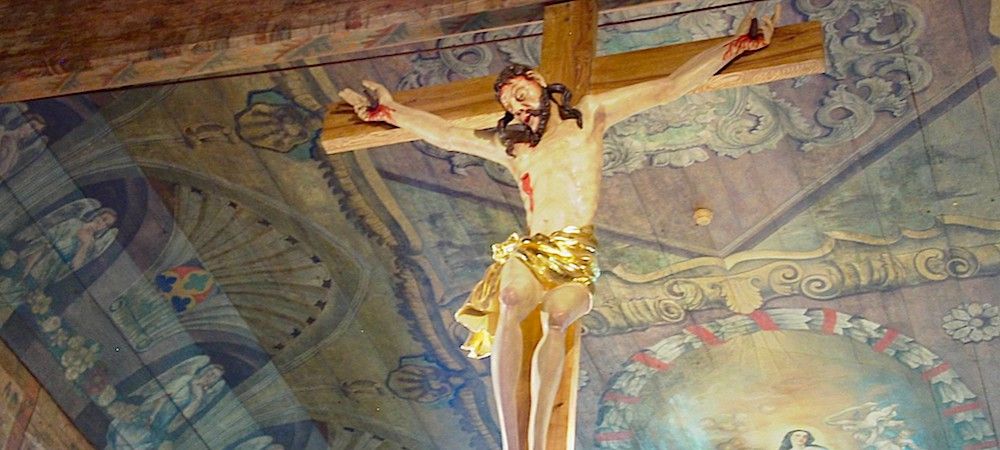
Haczów
Haczów is one of the most recognisable villages in the Podkarpacie region, primarily thanks to the majestic wooden Assumption of Holy Mary and Michael the Archangel church, located on a hill overlooking the Wisłok River.
The church was most probably funded by king Władysław II Jagiełło himself, together with his wife St Hedwig Anjou, towards the end of the 14th century, and the parish was established by the royal couple in 1388. The village of Haczów belonged to the crown then, so building a church was in a way the royal couple’s duty. They fulfilled this duty on a grand scale – royally – employing some of the best carpenters in Europe. Jagiełło was a neophyte baptised in 1386 and could not afford to economize on the Church, and Hedwig also had her reasons to show her best side in the Red Ruthenia she took by force from the Kingdom of Hungary in 1387.
It is understandable then that the church – the oldest and grandest example of a Gothic wooden church in the region – became a model for other churches and was recognised as a UNESCO Heritage Site. It is well worth a visit to take a closer look at the mastery of its architects, who built the church without using a single nail, and the unique polychrome painting from the end of the 15th century, the oldest painting surviving in the church.
The new church, situated nearby, holds the most valuable historic piece of art in Haczów and one of the greatest masterpieces of medieval sculpture in Poland – a Gothic Pieta from around the time of the foundation of the church, carved in limewood and decorated with polychromy.
Haczów is also notable for its non-material heritage as its citizens are famous for their careful attention for tradition, expressed, for example, in their care for the traditional Pogórze Region dress. It is best admired during traditional ceremonies, which is why it is worth seeing the “Haczowian Wedding” – one of the oldest continued ceremonial shows in Poland, which premiered in Kraków in 1937.
The script for the show was written by Stanisław Wysocki from Haczów, who based it on old regional songs and rites he collected, as well as the traditional music of the region. Through the years, the show has been extended and it is now performed by a group managed by Wysocki’s daughter Bożena Antosz.
The women’s dress is made distinct by the rich whitework embroidery characteristic for Haczów, exceptionally ornate, reminiscent of Broderie anglaise and Richelieu embroidery. Those aristocratic associations are well-founded, as the Haczowian embroidery developed thanks to Zofia Urbańska, wife of a local landowner, who popularised these sophisticated kinds of needlework – with white thread on white linen – among the women of Haczów with remarkable success.
The old manor house of the Urbański family is situated near the church hill, on the opposite side of the river. Destroyed during the war, it is slowly regaining its old splendour and perhaps it will one day join the Gothic church as the pride of Haczów. The original residence existed already in the 17th century, and the present house was built on its cellars by Ignacy Urbański at the beginning of the 19th century, almost three decades after his father bought the old royal village from the Austrian treasury.
The manor complex also includes a granary from the 18th century, a garden pavilion from the 1820s remodelled a hundred years later as a chapel, a reminder of the rightly bygone age – the block-like building of the Health Centre, constructed in the 1960s – and the ruins of an eclectic hothouse from the second half of the 19th century.
Take a virtual tour of the church
and watch the film:
It is understandable then that the church – the oldest and grandest example of a Gothic wooden church in the region – became a model for other churches and was recognised as a UNESCO Heritage Site. It is well worth a visit to take a closer look at the mastery of its architects, who built the church without using a single nail, and the unique polychrome painting from the end of the 15th century, the oldest painting surviving in the church.
The new church, situated nearby, holds the most valuable historic piece of art in Haczów and one of the greatest masterpieces of medieval sculpture in Poland – a Gothic Pieta from around the time of the foundation of the church, carved in limewood and decorated with polychromy.
Haczów is also notable for its non-material heritage as its citizens are famous for their careful attention for tradition, expressed, for example, in their care for the traditional Pogórze Region dress. It is best admired during traditional ceremonies, which is why it is worth seeing the “Haczowian Wedding” – one of the oldest continued ceremonial shows in Poland, which premiered in Kraków in 1937.
The script for the show was written by Stanisław Wysocki from Haczów, who based it on old regional songs and rites he collected, as well as the traditional music of the region. Through the years, the show has been extended and it is now performed by a group managed by Wysocki’s daughter Bożena Antosz.
The women’s dress is made distinct by the rich whitework embroidery characteristic for Haczów, exceptionally ornate, reminiscent of Broderie anglaise and Richelieu embroidery. Those aristocratic associations are well-founded, as the Haczowian embroidery developed thanks to Zofia Urbańska, wife of a local landowner, who popularised these sophisticated kinds of needlework – with white thread on white linen – among the women of Haczów with remarkable success.
The old manor house of the Urbański family is situated near the church hill, on the opposite side of the river. Destroyed during the war, it is slowly regaining its old splendour and perhaps it will one day join the Gothic church as the pride of Haczów. The original residence existed already in the 17th century, and the present house was built on its cellars by Ignacy Urbański at the beginning of the 19th century, almost three decades after his father bought the old royal village from the Austrian treasury.
The manor complex also includes a granary from the 18th century, a garden pavilion from the 1820s remodelled a hundred years later as a chapel, a reminder of the rightly bygone age – the block-like building of the Health Centre, constructed in the 1960s – and the ruins of an eclectic hothouse from the second half of the 19th century.
Take a virtual tour of the church
and watch the film:
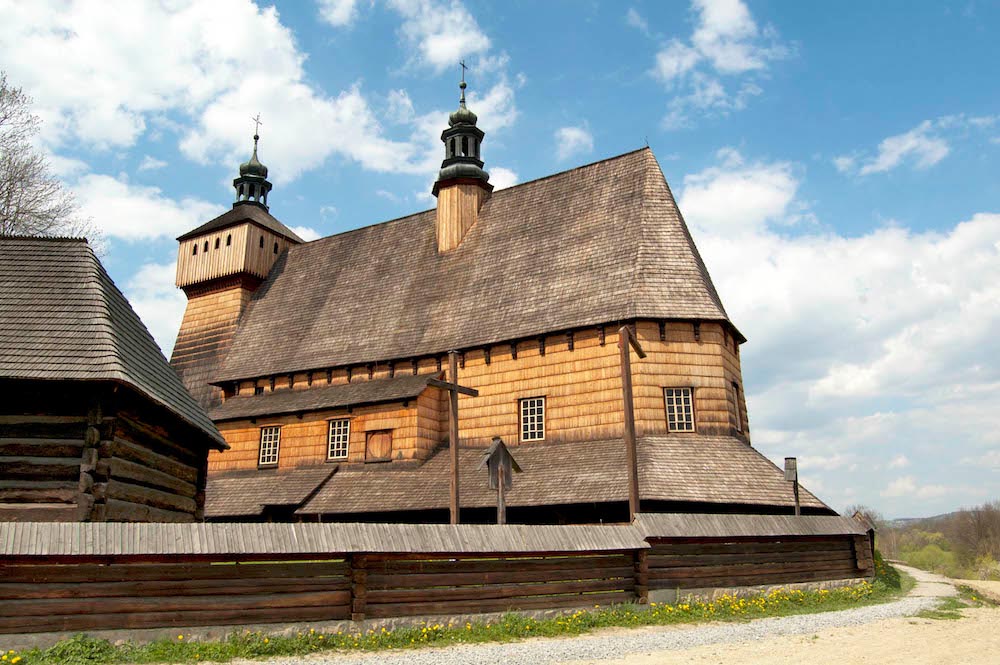
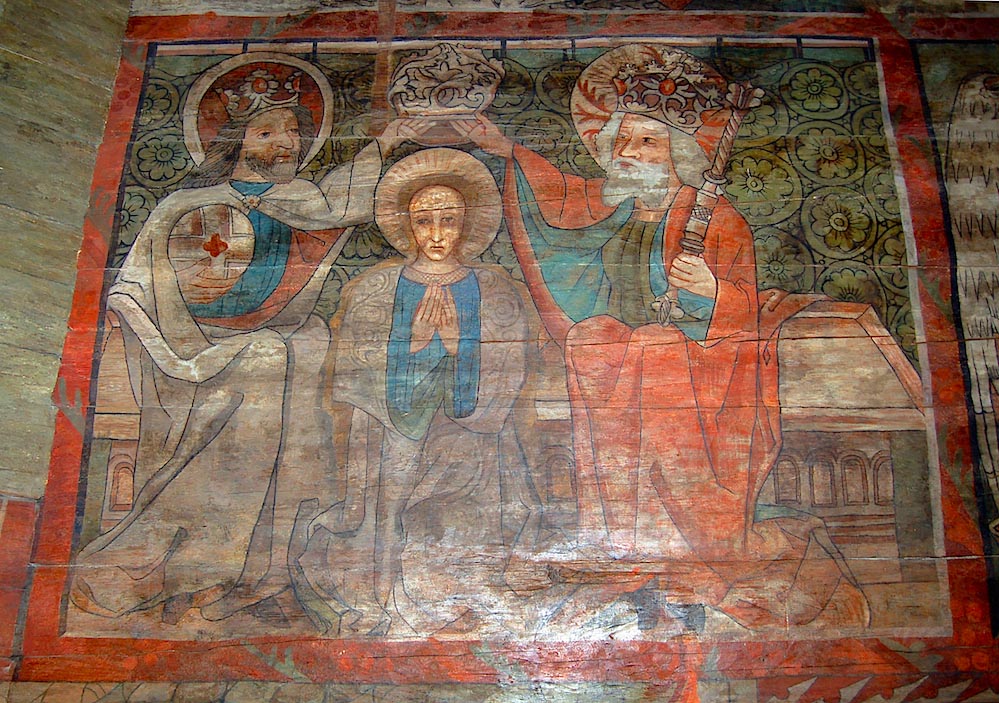
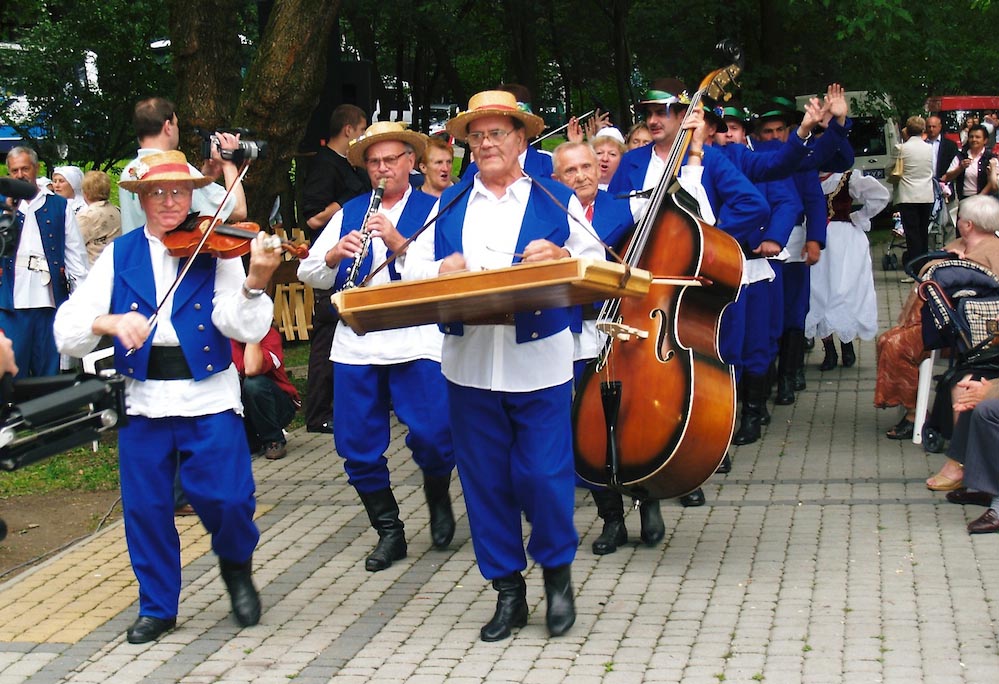
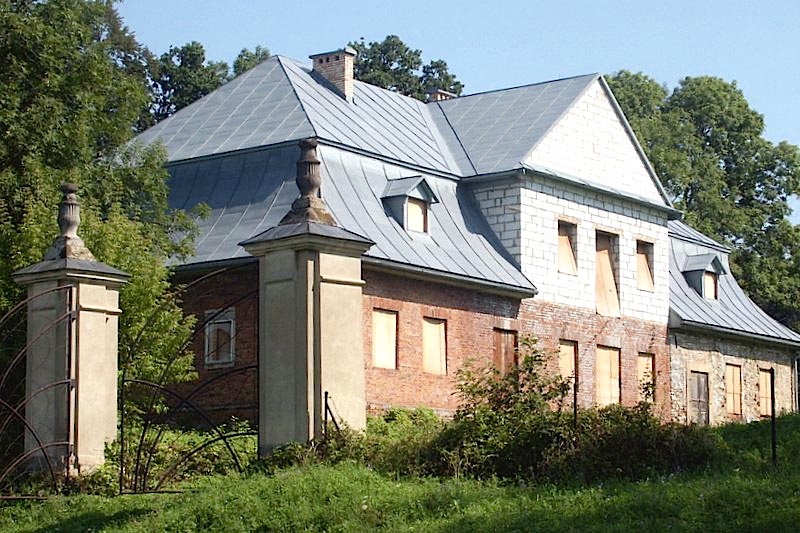
fot.: M. Rymar (1,3), arch. Arete sp. z o.o. (2), A. Józefczyk (4,5)
